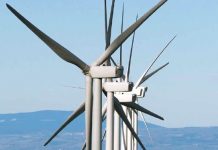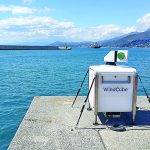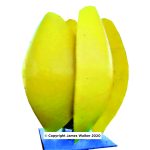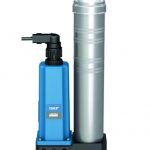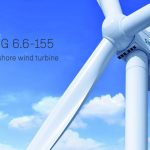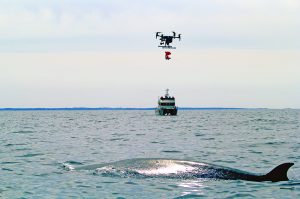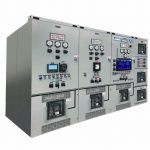Umbra Applied Technologies Group, Inc., a subsidiary of Umbra Applied Technologies, recently announced that its proprietary, advanced wind turbine soon will begin undergoing field testing.
Dubbed the V-HET, the high-tech vertical helix turbine is constructed of aluminum, carbon fiber, additional composite materials, and steel, making each unit robust enough to withstand the elements but light enough to harness the maximum amount of wind power.

The technology uses a modified helix-shaped, wind-capturing design that increases the unit’s ability to harness more of the wind’s energy. The helix blades use an electromagnetic field to “float” the blades to reduce mechanical resistance and the loss of energy associated with the friction that plagues many modern systems in use. This enables the unit to generate power at extremely low wind speeds typically only common of much smaller units, while producing exponentially more energy.
Testing will also include the V-HET variant, V-HETp. The V-HETp or vertical helix turbine power station, harnesses energy from wind, solar, ambient temperature differentiation, and in-ground telluric currents. This is a significant leap forward in producing true clean energy using more than 75 percent recycled materials to manufacture each unit. The company estimates the carbon cost of delivering each unit to be a fraction of existing platforms.
An array of 12 units is estimated to produce as much as 85,500 kW/h of energy annually — about what seven average American homes burn in a year. A building’s electrical system will take the energy when it is available and switch to power from the local utility when it is not. The V-Het will cost a fraction of what many wind turbines currently in use do and are targeted to deliver more electricity than units similar in size.
“Units have been under development for several years and represent a paradigm shift in current wind-harnessing technology,” said UAT’s CEO, Alex Umbra. “I am optimistic that once delivered, this platform will represent a significant leap forward in the clean-energy segment.”
The company estimates this technology can cut the carbon emissions of a 10-story commercial building by about 2 million pounds annually and saving the equivalent of 44,000 gallons of gasoline each year.
The units will be tested in varying environments across the United States in a partnership that includes business owners that have been long-time shareholders. These shareholders have volunteered to assist in the testing and development process onsite, at their places of business, to include several automotive dealerships.
“From the moment we launched Hygiea-related products, we have included shareholders in the testing and development process in a shareholder-centric partnership,” Umbra said. “This partnership affords the company an opportunity to include our shareholders in a way that most companies do not. Who better to get feedback from than those that have a vested interested in the company’s success? With Helix (V-HET), the goal is to test the unit’s ability to not only capture energy but determine its ability to deliver that energy for the purposes of charging EVs. This will assist in further reducing the carbon footprint of such vehicles and deliver true clean energy to charge them.”
More info umbraappliedtechnologies.com


















